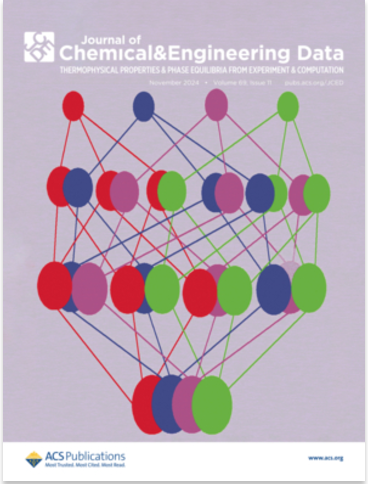A-BRAVE 试验:阿维列单抗治疗新辅助化疗后有残留病灶或初治手术和辅助化疗后有高风险的早期三阴性乳腺癌的 III 期随机试验。
IF 2.1
3区 工程技术
Q3 CHEMISTRY, MULTIDISCIPLINARY
Journal of Chemical & Engineering Data
Pub Date : 2024-06-10
DOI:10.1200/jco.2024.42.17_suppl.lba500
引用次数: 0
摘要
LBA500 背景:早期三阴性乳腺癌(TNBC)患者的预后仍然很差,需要新的有效治疗方法。TNBC是免疫原性最强的BC亚型,这可能是其对免疫检查点抑制剂敏感的原因。A-BRAVE试验旨在评估抗PD-L1抗体阿维列单抗作为高风险早期TNBC患者辅助治疗的疗效。研究方法这是一项III期、多中心、随机辅助研究,比较了抗PD-L1阿维鲁单抗与观察治疗1年对高复发风险TNBC患者的疗效。患者在完成包括手术和新辅助/辅助化疗在内的标准治疗后入组。高风险的定义是1)新辅助化疗后有浸润性残留疾病(乳腺和/或结节)(A层);2)初次手术后>pN2/任意pT、pN1/pT2或pN0/pT3(B层)。患者被随机分配(1:1,A、B两层平衡)至Avelumab 10 mg/kg 静脉注射,持续一年或观察。共需要 474 名患者才能检测出总患者的 3 年无病生存率从 60% 提高到 73.6%(HR 0.6;90% 功率,单侧检验,alfa 2%)。进行事件驱动分析需要 172 个 DFS 事件。假设 70%-80% 的患者入选 A 组,则在该亚组中检测到 HR 0.6 的预期功率为 70%-79%。总生存期是次要终点。研究结果从 2016 年 6 月到 2020 年 10 月,64 个意大利中心和 6 个英国中心随机分配了 477 例患者。11名患者(3名阿维列单抗患者,8名对照组患者)在随机分配后立即撤回同意书,并被排除在进一步分析之外。378名患者进入A层(83%),其中99名患者(57名阿维鲁单抗患者,42名对照组患者)在加入试验前接受了进一步的术后化疗。表中报告了两个共同主要DFS终点和次要OS终点的疗效结果。结论与对照组相比,为期一年的阿维单抗辅助治疗并不能显著改善高危 TNBC 患者的 DFS。然而,与对照组相比,阿维单抗显著改善了次要终点OS。此外,还将报告RFS和DMFS。已对肿瘤组织、血浆和粪便进行了集中收集,并将进行一系列相关研究。临床试验信息:NCT02926196 .[表格:见正文]本文章由计算机程序翻译,如有差异,请以英文原文为准。
A-BRAVE trial: A phase III randomized trial with avelumab in early triple-negative breast cancer with residual disease after neoadjuvant chemotherapy or at high risk after primary surgery and adjuvant chemotherapy.
LBA500 Background: Prognosis of pts with early triple negative breast cancer (TNBC) is still poor and new effective treatments are needed. TNBC is the most immunogenic BC subtype, and this may account for sensitivity to immune checkpoint inhibitors. The A-BRAVE trial was designed to evaluate the efficacy of avelumab, an anti PD-L1 antibody, as adjuvant treatment for pts with early TNBC at high risk. Methods: This is a phase III, multicentric, randomized adjuvant study comparing 1 year of treatment with the anti PD-L1 avelumab vs observation for TNBC pts considered at high risk of relapse. Pts were enrolled after they completed standard treatment with curative intent including surgery and neoadjuvant/adjuvant chemotherapy. High risk was defined as: 1) invasive residual disease (breast and/or nodes) after neoadjuvant chemotherapy (Stratum A), 2) >pN2/any pT, pN1/pT2, or pN0/pT3 after primary surgery (Stratum B). Pts were randomly assigned (1:1, balanced for strata A and B) to Avelumab 10 mg/kg I.V. q2w for 1 year or observation. Co-primary endpoints were disease free survival (DFS) in the total population and in Stratum A. 474 pts were needed to detect, in the total population, an improvement from 60% to 73.6% 3-year DFS rate (HR 0.6; 90% power, 1-sided test, alfa 2%). 172 DFS events were required to perform the event-driven analysis. Assuming a proportion of 70-80% pts enrolled in Stratum A, the expected power to detect an HR 0.6 at alpha allocated in this subgroup is 70-79%. Overall survival was a secondary endpoint. Results: From June 2016 to October 2020, 477 pts were randomly assigned from 64 Italian and 6 UK centers. 11 pts (3 avelumab, 8 control) withdrew consent immediately after randomisation and are excluded from further analyses. 378 pts entered Stratum A (83%), of whom 99 (57 avelumab, 42 control) received further chemotherapy after surgery prior to enrollment in the trial. Efficacy results for the two co-primary DFS endpoints and the secondary OS endpoints are reported in the table. Conclusions: One year adjuvant avelumab versus control does not significantly improve DFS in high-risk TNBC patients. Nevertheless, the secondary enpoind OS was significanlty improved with avelumab vs control. RFS and DMFS will also be reported. A centralised collection of tumor tissue, plasma and feces has been performed and will allow a number of correlative studies. Clinical trial information: NCT02926196 . [Table: see text]
求助全文
通过发布文献求助,成功后即可免费获取论文全文。
去求助
来源期刊

Journal of Chemical & Engineering Data
工程技术-工程:化工
CiteScore
5.20
自引率
19.20%
发文量
324
审稿时长
2.2 months
期刊介绍:
The Journal of Chemical & Engineering Data is a monthly journal devoted to the publication of data obtained from both experiment and computation, which are viewed as complementary. It is the only American Chemical Society journal primarily concerned with articles containing data on the phase behavior and the physical, thermodynamic, and transport properties of well-defined materials, including complex mixtures of known compositions. While environmental and biological samples are of interest, their compositions must be known and reproducible. As a result, adsorption on natural product materials does not generally fit within the scope of Journal of Chemical & Engineering Data.
 求助内容:
求助内容: 应助结果提醒方式:
应助结果提醒方式:


